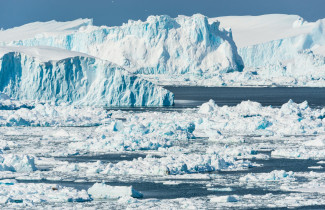An international multidisciplinary group of scientists published in Nature the first typology covering all Earth’s ecosystems. Researcher Teemu Tahvanainen from the University of Eastern Finland took part in the development and publication.
The new classification is unique in the global cover of all ecosystems with a common theoretical basis. The work was led by Professor David Keith at the University of New South Wales, Australia, with contributions from over 100 scientists.
”It may seem rather odd that we haven’t had this before, but historically scientists have forged advances by working somewhat separately in marine, freshwater and terrestrial ecosystems. This is the first time that all of this detailed knowledge has been brought together into a single framework taking advantage of common theory across the disciplines,” says David Keith.
The new classification sorts ecosystems at six hierarchic levels. The now published version reaches the third level of hierarchy with 110 functional groups of ecosystems. The classification is based on ecosystem functions, which means that a certain functional ecosystem group may withhold variants with different species and biotic communities. This level of classification enables global scale mapping and assessments. At regional level, more precision is often needed from classifications, and the global typology offers a framework for lower hierarchy solutions.
”Classification is among the oldest goals of ecological research and it prevails in many ways behind much of modern ecology too. As a discipline, it has been left aside from mainstream science, but timely needs for many applications in mapping, change detection or risk assessments of ecosystems are based on classification. Therefore, this is a most topical research area for which the now published global typology gives new frames,” says Teemu Tahvanainen.
The typology for Earth’s ecosystems supports assessments of ecosystems by the International Union for Conservation of Nature (IUCN) with goal to preserve biodiversity and services provided by ecosystems. Conservation and sustainable use together mean benefitting from ecosystem functions. This cannot mean utilisation that stops or destroys ecosystem functions. Classification of ecosystems based on their functions helps determine goals and methods for conservation and sustainability.
”This work raises the concept of ’ecosystem’ again in the centre of scientific scrutiny and underlines the need to proceed with more detailed levels of classification. For example, Finnish forest and mire type classification is from over one hundred years ago, when climate and land-use history were quite different from today. We also need to reconsider the theoretical grounds of our typologies and how they match in international comparisons,” comments Teemu Tahvanainen.
Nature publication:
Keith, D.A., Ferrer-Paris, J.R., Nicholson, E., Bishop, M.J., Polidoro, B.A., Ramirez-Llodra, E., Tozer, M.G., Nel, J.L., Mac Nally, R., Gregr, E.J., Watermeyer, K.E., Essl, F., Faber-Langendoen, D., Franklin, J., Lehmann, C.E.R., Etter, A., Roux, D., Stark, J.S., Rowland, J.A., Brummitt, N.A., Fernandez-Arcaya, U.C., Suthers, I.M., Wiser, S.K., Donohue, I., Jackson, L.J., Pennington, R.T., Pettorelli, N., Andrade, A., Lindgaard, A., Tahvanainen, T., Terauds, A., Venter, O., Watson, J.E.M., Chadwick, M.A., Murray, N.J., Moat, J., Pliscoff, P., Zager, I. & Kingsford, R.T. 2022. A function-based typology for Earth's ecosystems. Nature, DOI: 10.1038/s41586-022-05318-4
https://www.nature.com/articles/s41586-022-05318-4
Global ecosystem typology web-portal
For more information, please contact:
University researcher, PhD, Teemu Tahvanainen (Docent, plant ecology, environmental change), Department of Environmental and Biological Sciences, University of Eastern Finland, Joensuu Campus, [email protected], tel. +358 504 423 987
In the photo: Aapa mires are wet northern fens that lack the thick Sphagnum moss peat accumulation of raised bogs. A research group led by Teemu Tahvanainen has studied potential shift in future from fen to bog functional ecosystem in response to climate change. Photo: Pasi Korpelainen.



